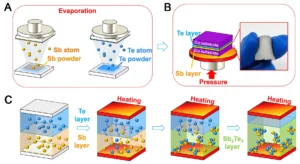The molecular structure of matter plays a crucial role in determining its state and properties. In physics, understanding the differences between the molecular arrangements in solids, liquids, and gases is fundamental to explaining their behaviours. This article delves into the molecular structures of these three states of matter, exploring their unique characteristics and the principles underlying their formation.
1. Solids
Molecular Arrangement
In solids, molecules are tightly packed in a regular, fixed, and orderly arrangement. This rigid structure is due to strong intermolecular forces, which hold the molecules in place. The most common type of solid structure is crystalline, where atoms, ions, or molecules form a well-defined, repeating pattern known as a crystal lattice. Common examples include salt (NaCl) and diamond (carbon).
Intermolecular Forces
The strength of intermolecular forces in solids is high, which can include ionic bonds, covalent bonds, and Van der Waals forces. These forces are responsible for the solidity and rigidity of the structure. In ionic solids, electrostatic forces between positively and negatively charged ions dominate. In covalent solids, shared electrons form strong covalent bonds, as seen in diamond and quartz (SiO2).
Properties
- Definite Shape and Volume: Solids maintain a fixed shape and volume due to the rigidity of their molecular structure.
- High Density: The closely packed molecules result in high density.
- Incompressibility: The lack of free space between molecules makes solids incompressible.
- Fixed Melting Point: Solids have a characteristic melting point at which they transition to a liquid state.
2. Liquids
Molecular Arrangement
In liquids, molecules are still close together but not in a fixed position. This allows them to move past one another, giving liquids a definite volume but an indefinite shape. The molecular arrangement is less orderly than in solids but more structured than in gases.
Intermolecular Forces
The intermolecular forces in liquids are weaker than in solids but stronger than in gases. Hydrogen bonding, dipole-dipole interactions, and Van der Waals forces play significant roles in maintaining the liquid state. For example, hydrogen bonding in water (H2O) gives it unique properties like high surface tension and boiling point.
Properties
- Definite Volume but Indefinite Shape: Liquids take the shape of their container but retain a constant volume.
- Fluidity: Molecules can slide past each other, allowing liquids to flow.
- Viscosity: This is a measure of a liquid’s resistance to flow. Higher intermolecular forces result in higher viscosity.
- Surface Tension: Caused by cohesive forces between molecules at the surface of a liquid, resulting in the minimisation of surface area.
3. Gases
Molecular Arrangement
In gases, molecules are widely spaced and move freely in all directions. The arrangement is highly disordered, and the average distance between molecules is much greater than in solids and liquids.
Intermolecular Forces
The intermolecular forces in gases are very weak, almost negligible compared to those in solids and liquids. This allows gas molecules to move independently of one another, leading to high kinetic energy and rapid diffusion.
Properties
- Indefinite Shape and Volume: Gases expand to fill the shape and volume of their container.
- Low Density: The large amount of space between molecules results in low density.
- Compressibility: Gases can be compressed easily due to the significant amount of free space between molecules.
- High Diffusivity: Gas molecules spread out rapidly and mix evenly with other gases.
Kinetic Molecular Theory
The kinetic molecular theory provides a framework for understanding the behaviour of gases based on the motion of their molecules. According to this theory:
- Gas molecules are in constant, random motion.
- Collisions between gas molecules are perfectly elastic, meaning no kinetic energy is lost.
- The average kinetic energy of gas molecules is directly proportional to the temperature in Kelvin.
Phase Transitions
The transition between different states of matter involves changes in molecular structure and energy:
- Melting: The transition from solid to liquid involves breaking some intermolecular forces, allowing molecules to move more freely.
- Freezing: The transition from liquid to solid involves forming stronger intermolecular forces, locking molecules into a fixed structure.
- Vaporisation: The transition from liquid to gas involves breaking most intermolecular forces, allowing molecules to move independently.
- Condensation: The transition from gas to liquid involves forming intermolecular forces, bringing molecules closer together.
- Sublimation: The direct transition from solid to gas involves breaking all intermolecular forces without passing through the liquid phase.
- Deposition: The direct transition from gas to solid involves forming strong intermolecular forces without passing through the liquid phase.
Conclusion
The molecular structure of solids, liquids, and gases is fundamental to understanding their physical properties and behaviours. Solids have a rigid, ordered structure with strong intermolecular forces; liquids have a less ordered structure with intermediate forces; and gases have a highly disordered structure with weak intermolecular forces. The kinetic molecular theory and phase transitions further elucidate the dynamic nature of these states, highlighting the interplay between molecular motion and energy. Understanding these principles is essential in fields ranging from material science to thermodynamics and beyond.




